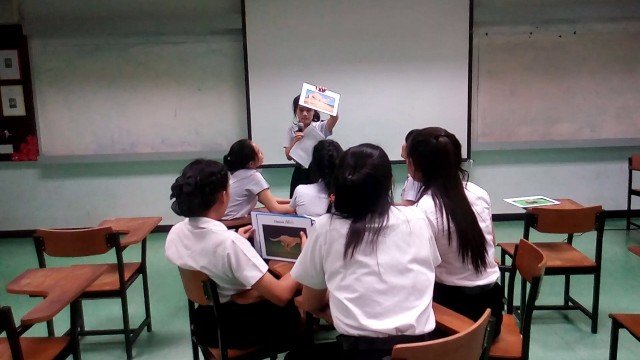As teachers, when we encounter a problem in teaching such as students getting bored with subject matter and less motivated during the lesson, we have to choose a learning model that can foster motivation and student interest as a solution to the problem. The learning model to choose is an active and student-centered learning model. Therefore, the cooperative learning model is one of the models I suggest in this case. So, in this article I want to discuss one kind of cooperative learning model called Everyone Is A Teacher Here.
The main focus in cooperative learning models is to develop collaborative skills to solve problems with their peers while studying. The role of teachers is only to guide and facilitate students. While Everyone Is a Teacher Here is one type of learning from cooperative learning model. Everyone Is A Teacher Here is applied to gain great class participation and individual responsibility.
The implementation of the Everyone Is A Teacher Here model is aimed at getting students to learn actively and independently, courageously asking questions and giving opinions in front of their friends. Furthermore, Supriyono (2012)explained that there are several skills that can be achieved with this learning model; namely the skills to ask questions, skills to identify problems, skills to give opinions, skills concluded the discussion.
To apply the Everyone Is A Teacher Here model of learning, the following are the steps that each teacher can use in the lesson they teach:
After starting the lesson and explaining the core of the lesson to the students, the teacher distributes papers to each student in the class. Then, the teacher asks students to write down a question about the subject matter that had been learnt or topic that students like best and be mastered on the paper.
After the students writes the question, the teacher collects all the papers and then shuffles the paper to return it randomly to students. It should be underlined that students should not accept their own papers.
The teacher asks students to understand the questions written on the paper they receive, and then encourages them to find answers to the question. At this stage the teacher gives a certain time limit for students to think about the answer.
Then, after the time to find the answers run out, the teacher asks the volunteers to raise their hands for reading the questions on the paper then explaining his or her opinion or the answer to the question. If no student is willing to be volunteer, the teacher may appoint one of the students, but the volunteery technique remains the primary objective in order for the student's skill to express an opinion grow through this process.
After a student reads a question and gives the answer, the teacher invites another student to give an opinion on the answers given by the student.
The teacher gives appreciation to every student who has raised their opinion for each question. Appreciation is given by the teacher as a positive reinforcement for student learning. Then, the teacher develops this discussion until each student gets a chance to answer the questions they receive with the time available.
At the end of the lesson, the teacher clarifies any student answers that are considered necessary to be clarified.
As a conclusion, Everyone Is A Teacher Here is worthy to apply in your classroom, especially as an activity to help students recall what they have learned before. Fortunately, this model can be used in any lesson and at any level. By applying this method it is expected that the students' skills to learn independently, the skills of expressing opinions and the skills of asking questions evolve along with the learning process of the students.
References
(a teacher and writer)@affiedalfayed
TO SUPPORT EDUCATIONAL CONTENTS AND RESOURCESUSE #steemiteducation TAG




Excellent strategy !
It would be good to apply it regularly.
As an intervention strategy, I've employed a similar tactic t assist my learners in learning better. I grouped the learners into groups of 6 to 7 and assigned a gifted earner to each group to be their mentor. The only problem is the class size. Having 50 plus learners in one classroom creates an issue. But it is still a brilliant strategy you've written about here.
Wow. It is surprising hearing that the class of 50 learners. How can you deal with such the numbers. You must be a great teacher. My class only has 30 students.
Yoh! I envy you. A class of 30 is a dream class. I try to survive on a daily bases. I don't teach a class, I hold mass meetings!